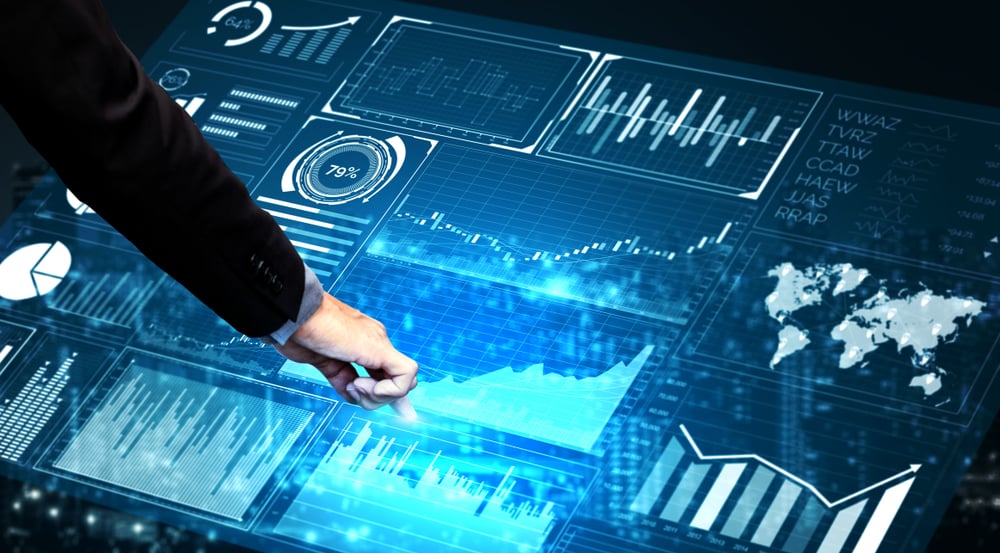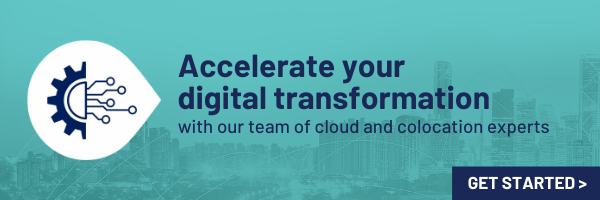March 25
Artificial Intelligence (AI) and machine learning have made it infinitely easier for data center teams to monitor equipment performance and proactively predict replacement needs. But these same tools can also help teams monitor and address real-time data center efficiency on a day-to-day basis. When applied to an overall facility (rather than focused on a specific piece of equipment for lifespan monitoring), AI has the capability to optimize environments dynamically in real-time to achieve peak environmental efficiency.
AI Improves Data Center Efficiency
While there are many individual aspects that make up a data center, the two major components are power and cooling. Optimize those buckets and a data center will run more efficiently in terms of performance, cost, and operation.
Learning how to optimize data center environments in the past only accounted for certain variables and was difficult to do in real time. AI has allowed for dynamic optimization, improving data center efficiency immensely.
Before AI
In traditional data center instances, supply is not always tied to actual demand. Data centers tailor servers, racks, cross connects, and other items on order forms to client need, but things like cooling often remain constant. Cooling units commonly run at the same speed, cooling flow, and energy levels across the data center. However, some units are cooling lightly loaded areas while others are responsible for heavily loaded heat producing areas. Cooling is one of the main elements of a data center, so a uniform approach naturally leads to major inefficiencies (particularly for data centers that are not fully utilized).
Power is similarly treated as a constant. Data centers draw a certain amount of power from the utility, but exactly how and where that power is used is difficult to monitor down to the individual unit level. Teams may know how much power every individual data processing unit should be drawing based on manufacture specs, but the true performance of an individual unit is hard to measure within a larger portfolio. Adjusting power for better efficiency would require a deep understanding of real-time need and actual power usage — plus the ability to quickly act on those insights — that data centers do not have easy access to without AI solutions.
Before AI, trying to constantly monitor and adjust power and cooling based on real-time need was too time consuming and risk prone. The resource and cost waste created by running consistent cooling and power, regardless of real need, was an acceptable cost because it outweighed the alternatives (an even higher cost for monitoring and the potential for a catastrophic mistake).
What AI Can Do for Data Center Efficiency
Applying AI to cooling allows teams to quickly and effectively manage the thermal balance of each individual unit to match the load it is serving. AI can intuitively reduce the speed of units that are lightly loaded while increasing the effort of units that are heavily loaded. If one unit is turned off, the adjacent units may ramp up to catch the load of the offline unit. In medium to large data centers, this is a careful balancing act that may be in constant motion to obtain optimal efficiency.
For power, AI allows data centers to track the real power draw of individual data processing units, allowing teams to define and locate where power is being diverted from the critical and essential loads. Like with cooling motor amperage, AI allows teams to more quickly set a benchmark for optimal performance and know within seconds (sometimes even before) when a piece of equipment isn’t functioning as intended.
AI provides data centers with deep monitoring capabilities coupled with the ability to instantly adjust to need with minimal manual intervention.
How AI Benefits Data Center Efficiency
The nuanced approach to balanced cooling provided by AI allows data centers to ensure the proper temperature is maintained without spending more on cooling than is strictly necessary. AI and machine learning also account for additional critical factors, like outside temperature and humidity, to ensure everything is running exactly as needed at that moment. Constant monitoring means that appropriate cooling is always applied, or teams are quickly notified of an issue.
Knowing the power in and the power out of each individual component can tell teams when a piece of equipment is performing sub-optimally. With the ability to monitor every piece of data processing equipment (including data hardware, storage, and network equipment), teams know when a piece of equipment is failing well before it manifests as a business facing transient. The same predictive maintenance benefits discussed in AI & Performance Monitoring can apply to just about every piece of equipment in a data center. If teams can reduce unnecessary maintenance and accurately predict the true lifespan of each component, data center efficiency would reach unprecedented levels.
By automating monitoring and optimization, data centers can reduce waste across two of the biggest cost factors without the risk of impacting performance.
AI vs. People
Artificial Intelligence is a long way from completely replacing data center technicians and engineers. But it can fill gaps that are traditionally difficult to fill with manual labor.
For instance, if a data center hired the best Chief Engineer in the world to sit and review the building automation system continuously for 24 hours a day, there would be no need for AI. The engineer could monitor and evaluate every component and identify the inter-operability associated with the load, environmental conditions, equipment health, efficiency, and effectiveness. But you would need “the best Chief Engineer in the world” for every data center. Even if you could find a rockstar for every location, a person is never 100%. Time motion studies show that the best workers are only the most efficient and effective for an average of four hours out of every eight-hour day. That means the same superlative Engineer is only effective 12 hours a day (assuming they’re working 24-hours non-stop). AI is on and “paying attention” all the time — no need for bathroom breaks.
With that said, if data centers removed engineers entirely, then physical work would not take place. No one would adjust the valve or turn the wrench, see the leak or listen to changes in system flow.
Maybe someday AI will lead to completely unmanned enterprise-sized data centers, but it has taken 30 years to get from the “Smart Buildings” of the 1980s to Nest technology. AI is not likely to completely replace people in data centers anytime soon.
“Human data center knowledge is needed to train AI to make reasonable decisions/recommendations and, especially in the early stages of a deployment, to ensure that any AI outcome is appropriate for a particular data center.”
— Rhonda Ascierto, Uptime Institute
How AI Benefits Data Center Customers
Data center operators and their customers will see increased benefits from early AI adoption. With well implemented AI, data centers will not only be able to better maintain equipment efficiency in real time, but they’ll be able to more accurately plan the future. The ability to easily account for differing environmental factors and adjust in real time allow data centers to embrace dynamic optimization, making the center consistently more efficient without threatening performance. These operational efficiencies and improvements will have trickle down benefits for clients, likely in the form of better optimized performance, less risk of downtown, and the potential for lower overall operational costs. Machine learning becomes more effective and efficient over time, so as AI continues to take hold in data centers, we’ll see increased improvements and benefits for everyone involved.




